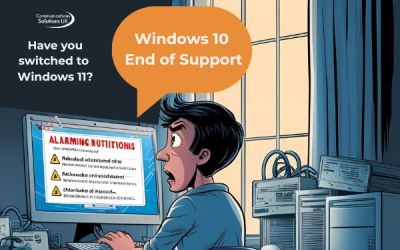Fibre Broadband for Business: Benefits, Tips, and Cost

Content:
When the Internet is slow productivity suffers and people get frustrated. In today’s competitive business world, a fast, reliable Internet connection is vital for success. Fibre broadband is now the best choice for a high-speed, stable Internet connection.
In this article we will explain
-
-
- What is fibre broadband and how it works
- Why businesses should invest in fibre broadband
- How to work out what broadband speed you need
- What to watch out for when choosing your Broadband
- What is the difference between business and home broadband
-
What is Fibre Broadband and How does It Work?
Fibre broadband is an Internet connection that uses fibre-optic cables to send data. Unlike copper cables, fibre uses light to transmit information. This results in a much faster and more reliable connection. Fibre broadband now reaches speeds of up to 1Gbps ( 1 gigabit per second).
Why Should Businesses Invest in Fibre Broadband
There are many reasons why investing in fibre broadband makes good business sense. The three key reasons for most businesses are:
- Speed: Fibre broadband is faster than any other technology. This means that you can upload and download large files faster, make video conference calls and stream high-quality videos without buffering or delays. No one likes to watch an egg timer or spiralling circle whilst they wait. So people are happier and more productive. How fast is faster?
-
- A traditional ADSL service will deliver 10-30 Mbps
- A copper cable on an FTTC circuit (Fibre To The Cabinet) – 25-300 Mbps
- A full fibre service, i.e. Fibre To The Premises (FTTP) – 40 Mbps up to 1Gbps
-
-
-
- Reliability: Fibre broadband connections are stable even at peak usage times. This is because data is transmitted over a fibre optic cable as light. Unlike copper cables fibre is also not affected by electromagnetic interference; so there is no loss of signal quality and therefore data integrity is greater.
- Future-Proof: Openreach are phasing out copper-based broadband services such as ADSL and FTTC by the end of 2025. This is because the copper network has run out of capacity. Fibre broadband is replacing these traditional services. Fibre broadband can deliver the ultra-fast speeds that businesses need to meet the ‘data hungry’ processes and cloud-based applications that are now in common use.
GET IN TOUCH!
We want to hear about your challenges. Talk to us! Our consultants can audit your systems, plan changes, implement improvements and support your people.
How to work out what broadband speed you need?
How you work out what broadband speed you need critically depends on how you use the internet and how you anticipate your requirements will change over time. This is important as many broadband contracts lock you in for a minimum of 24 or 36 months. If this is the case, always build in some extra capacity for growth. Data traffic always increases particularly if you use cloud-based applications.
To assess your requirements, start with answers to the questions below. If you are in any doubt, consult with your IT experts or a Managed Service Provider like us.
-
-
- How many simultaneous users do you have accessing cloud-based services?
- How many users are uploading as well as downloading data?
- How big are the files that they are using, uploading, downloading?
- How many simultaneous VOIP phone calls are made? Each VOIP phone call takes typically 100Kbps per call.
- Do you have any extra busy times of day or week? When are the peaks? Spikes in data load can be detrimental to voice quality if the broadband is not correctly partitioned.
- Do you have any ’traffic’ statistics to work from?
- Do company backups happen in real-time or are they time at certain times of day? Do they add to the data traffic load?
-
What to watch out for when choosing your Fibre Broadband
-
- Naming Conventions
There are broadband providers that use terminology that confuses. There are broadband services described as Fibre or ‘Superfast,’ but these are not ‘Full Fibre’ services. They may only be fibre to the BT Openreach green cabinet on the side of the road. Described as FTTC or Fibre To The Cabinet this will give you speeds ranging from 30Mbps to 300Mbps.
The fastest fibre broadband services are described as ‘Full Fibre’ or ‘Ultrafast.’ These use fibre ‘end to end’ meaning directly from the exchange to your premises. This is why they are called FTTP or Fibre To The Premises.
-
- Contract Term
Network providers typically offer 12, 24 or 36-month contract terms. The longer the term you sign up for, the better deal you can expect. If you enter into a longer-term contract ensure that you build in spare capacity for growth.
-
- Charges
Charges for broadband fall into 2 categories.
- The installation and set-up.
- The Monthly rental
Installation and set-up may include external works to get the fibre to your premises and a new router. The router that you may have used in the past on the traditional copper based broadband services will not be compatible with the fibre service.
The monthly rental charge will relate specifically to the speed and Service Level that you choose. For a business fibre connection with a lower speed such as 160/160 Mbps you are likely to be paying about £40 +VAT a month. Remember the higher the speed, the faster the response to an outage, the more expensive the fibre broadband service will be.
-
- Network Provider
Alongside the well-known broadband providers like BT and Virgin Media, there are increasingly a number of regional fibre providers. Managed Service Providers like us, have access both to the well know national providers as well as to new providers, such as CityFibre and Giganet. If you give your MSP your requirements, they can save you the ‘leg work’ and shortlist a range of providers for you that will serve your location.
-
- Other jargon to wise up about
- Symmetrical Speeds: Full fibre services should be offering symmetrical speeds. This means that you have the same upload as download speed. For businesses using cloud-based applications this is invaluable.
- Static IP Addresses: Many cloud-based applications require a business to have a static IP address. Check if you need one, whether it is included with the service, or whether there is an additional charge for one or more.
What is the difference between business Fibre Broadband and Home Fibre Broadband?
Usually business broadband is more expensive than home broadband. The key question is why? There are two main reasons:
- The Service Level Agreement or SLA. If something goes wrong, the SLA is how long the network provider has contractually to fix the problem. The SLA on business broadband, as it is likely to be critical to the business, can vary from 4 to 8 business hours to fix. This compares with the SAL on home broadband that could be up to 48 hours.
- Contention Ratio. Home broadband speeds have a reputation for ‘dipping’ at peak times. This is usually when people are at home gaming and streaming films. This ‘dipping’ happens because users share ‘one big pipe’ and when they all access it as the same time, there is not as much bandwidth to ‘go round.’
Business broadband, unless you have a dedicated leased line, will still be subject to a contention ratio, but to a much lesser extent. There will be fewer users connected to the ‘same pipe,’ so speeds will remain consistent.
A leased line is a line dedicated to your business. It is the only broadband service where there is no contention on the line. You will be guaranteed the speed that you contracted for.
Conclusion
Full fibre is fast and reliable, enabling the widespread use of cloud-based applications, video and streaming. Fibre is a contributor to improvements in productivity and staff motivation, as systems and applications become faster and more responsive.
It makes good business sense to move to fibre now rather than wait. If you are ready to take advantage of full fibre, the questions you should be asking your supplier are as follows. Otherwise speak, with the experts and contact us.
-
-
- How much will it cost to get the speed I need?
- How easy is it to upgrade my service to a faster speed if I need it?
- Is a static IP address included? What if I want more than one?
- What contract lengths are available?
- How long will it take to install my circuit?
- If there is an outage, how long will it take to fix?
-
GET IN TOUCH!
We want to hear about your challenges. Talk to us! Our consultants can audit your systems, plan changes, implement improvements and support your people.
Stay Up to Date With Us
Subscribe to Our Newsletter
Follow Us
Click below to explore our feeds!
Services
IT Consultancy
Communications Services
Service Levels
Resources
Terms & Conditions
Privacy Policy
Mobile Roaming
Quick Links
Success Stories
Contact US
About US
Blog
GET YOUR FREE IT AUDIT!

To give you confidence in our service, get to know us and how we work, contact us for your Free IT Audit.
The IT Audit
- Provides us with the information to assess the status of your systems.
- Identifies any vulnerabilities and potential concerns.
- Shows you how we manage your systems and report back.
GET IN TOUCH!
We want to hear about your challenges. Talk to us! Our consultants can audit your systems, plan changes, implement improvements and support your people.
Call us on 0118 920 9420
Email us info@com-solutions.co.uk





